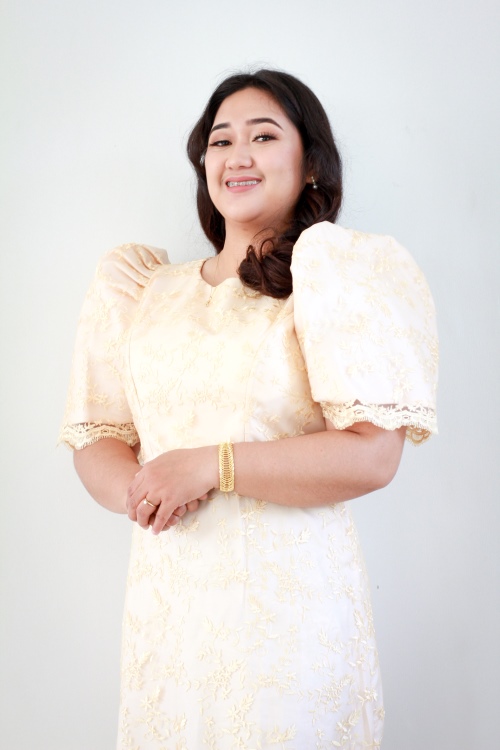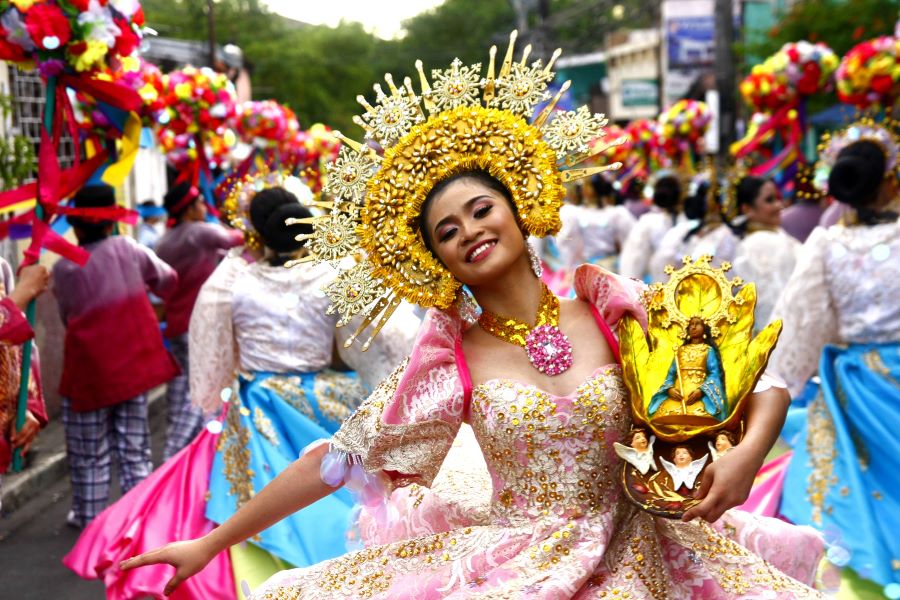Lorainne is a marketing writer. Her first love is writing…
We have all worn Filipiniana terno for Buwan ng Wika and perhaps performed Tinikling or acted as Maria Clara or one of the many courageous women who shaped our country’s history. Indeed, the Filipiniana is deeply intertwined with the Philippines’ rich culture and history. It has undergone numerous changes throughout history, but its beauty and status remain unwavering that, even today, the most stylish celebrities, top politicians, and even regular women wear Filipiniana for the most important occasions. In fact, it is a popular choice of bridal dress for church and civil weddings.
Let us delve into the history of the filipiniana and how it evolved into the modern version we love today. Of course, we’ll also show some modern terno dress styles to inspire your outfit for your next function.

A Brief History of the Filipiniana Terno
Before the Spanish colonized the archipelago that became the Philippines, some pre-colonial Filipinos wore a three-piece set of clothing consisted of a shirt, tapis or a long skirt, and alampay. As the colonizers exerted influence on the culture and daily lives of the early Filipinos, the local fashion started to adopt European influences, and the Filipiniana was born.
Baro’t Saya
The Baro’t Saya is the first version of the Filipiniana. This consisted of the baro or shirt and the saya or skirt.
While the Baro’t Saya clearly originates from pre-colonial shirt and tapis clothing, the Spanish influence is clear in the elements of the clothing, specifically the visuals, the materials, and the emphasis on modesty.
For one, the piña fiber used to make the Baro’t Saya was brought during the Manila Galleon trade from South America. The material is fine, so the resulting clothing are thin, perfect for the tropical Philippine weather.
Secondly, the use of the alampay or pañuelo to add coverage to the upper body and a tapis for the lower body is the product of the Christian idea of modesty.
These influences brought together the Baro’t Saya that serves as the foundation for the Filipiniana.
The Maria Clara
By the 1890s, the Baro’t Saya has become more intricate. The Maria Clara, named after the fictional character in Rizal’s Noli Me Tangere, who represented the ideal Filipina, exhibits the deep Spanish influence in the country.
The same elements that made the Filipiniana modest remained. However, the puffed sleeves are exaggerated and was considered a sign of elegance.
A new addition is the embroidery on the camisa, pañuelo, and tapis. In particular, the embroidered tapis distinguished the upper classes from the lower classes. The multi-tiered social classes governed life and influenced numerous cultural elements during the colonial era.
Traje de Mestiza
The Traje de Mestiza emerged at the turn of the century. This version is the closest to the modern Filipiniana terno typically worn today.
What is most interesting in the Traje de Mestiza is the emergence of American influence in the Filipinos’ clothing style.
The Traje de Mestiza featured a narrower, shapelier silhouette accentuating the waist and hips while flaring out toward the end into a train.
The puffy sleeves that used to be long had become shorter and flatter – dubbed the butterfly sleeves. The pañuelo also became narrower so it has become more of a decorative collar than a covering.
However, the most notable update is that the Traje de Mestiza featured matching top and skirt, which is why we also call Filipiniana the “terno.” This, plus its intricate design, is the reason Filipinas reserved the Traje de Mestiza for formal occasions.
Balintawak
While our ancestors wore the Traje de Mestiza for special occasions, they wore the Balintawak for everyday. This version features the butterfly sleeves and shapely silhouette, but the skirt is shorter.
The shorter skirt of the Balintawak made it more comfortable and breathable. So, it was the preferred terno for strolling and other outdoor activities, as well as for visiting the provinces.
The Modern Filipiniana
In modern times, the Filipiniana is used as an umbrella term for all types of traditional Filipino clothing. However, modern iterations of the Filipiniana resemble the Traje de Mestiza more closely, with the butterfly sleeves as its most iconic feature.
The Filipiniana terno has proven to be rather versatile and a timeless part of fashion trends for modern Filipinas. Different iterations of the Filipiniana have been redesigned into tops, form-fitting dresses, jumpsuits, and of course, gowns.
Let’s look at how modern Filipinas wear modern terno dresses and be inspired!
Filipiniana Tops
Filipiniana tops come in a variety of designs and colors, as the butterfly sleeves can be applied to different blouse designs. Some tops are longer, but there are also cropped tops and bolero styles.
Another stylish way to wear Filipiniana tops is as wraparound blouses like this one:
Occasionally, daring Filipinas don the exaggerated sleeves of the Maria Clara.
Filipiniana Dresses
The Filipiniana style has also been applied to more modern dress designs, such as pencil cuts and A-line dresses.
Moreover, modern Filipiniana dresses are not always made with piña fabric. Contemporary designers have taken the liberty to use a variety of fabrics and designs to update the classic Filipiniana terno, such as incorporating indigenous fabrics or design elements.
View this post on Instagram
Filipiniana Pantsuits
Another staple among modern Filipinas is the pantsuit. So, of course, modern versions of the Filipiniana terno include pantsuits:
Modern Filipiniana Gowns
Of course, Filipiniana dresses have also been worn as gowns for various formal events. Though, perhaps it is most common to wear them as bridal gowns.
Some rebelled against the modest leanings of the original terno and feature more skin:
Just as there are a variety of styles of Filipiniana today, modern Filipinas wear modern versions of this traditional dress to all types of events, from graduations to award shows to weddings.
Modern Filipiniana for Modern Filipinas
The Filipiniana terno and its iterations exemplify the history and culture of the Philippines, starting from its pre-colonial history to the Spanish and American influences. Nowadays, talented Filipinos continue to reinvent the Filipiniana to showcase modern Filipina identities and tastes. All these iterations are a celebration of our rich culture and the persistence of our identity.
When was the last time you wore a modern Filipiniana? Share it with us on Facebook!
What's Your Reaction?
Lorainne is a marketing writer. Her first love is writing but her mistresses are make-up, art, and theater. For her, everyday is a constant battle between matcha and coffee.


